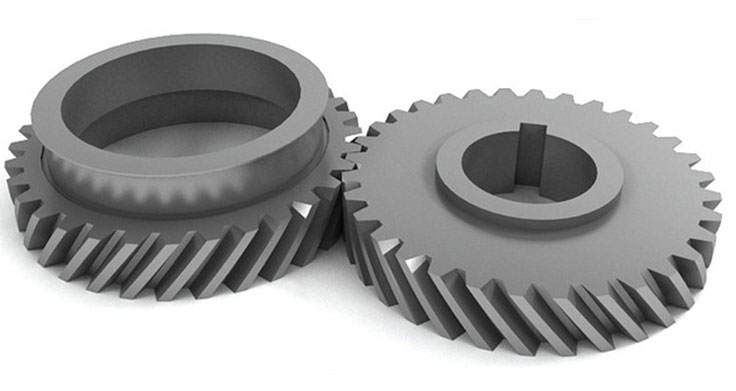Helical gears and spur gears are two common types of gears used in various applications, each offering distinct design characteristics and efficiency trade-offs. Let’s compare helical gears and spur gears in terms of their design and efficiency:
1. Design:
- Helical Gears: Helical gears have slanted teeth that are helically cut around the gear’s circumference. The helix angle creates a gradual tooth engagement during gear meshing, resulting in a smoother and quieter operation compared to spur gears. The helical design allows for multiple teeth to be in contact at any given time, leading to improved load distribution and reduced stress concentration.
- Spur Gears: Spur gears have straight teeth that are parallel to the gear axis. During meshing, spur gears make instantaneous contact with each other, leading to higher impact forces and noise compared to helical gears. Spur gears have a simpler design, making them easier and less expensive to manufacture.
2. Efficiency:
- Helical Gears: Helical gears generally have higher efficiency than spur gears due to their smoother tooth engagement and improved load distribution. The gradual tooth engagement reduces shock loads and friction, resulting in lower power losses during gear meshing. However, helical gears may have slightly higher axial loads due to the helix angle, which can affect bearing requirements.
- Spur Gears: While spur gears are efficient, they tend to have lower efficiency than helical gears, especially at higher speeds. The instantaneous tooth engagement in spur gears can lead to higher friction, noise, and vibrations, resulting in more significant power losses during gear meshing. However, spur gears have the advantage of simplicity and ease of meshing, which can be advantageous in certain applications.
3. Noise and Vibration:
- Helical Gears: Helical gears produce less noise and vibration compared to spur gears due to their gradual tooth engagement. The helix angle reduces impact forces and minimizes gear meshing noise, making them a preferred choice for applications where noise reduction is essential.
- Spur Gears: Spur gears are more prone to generating noise and vibrations due to their instantaneous tooth engagement. The higher impact forces during meshing can result in louder gear operation, which may be a consideration in noise-sensitive applications.
4. Applications:
- Helical Gears: Helical gears are commonly used in applications where smooth operation, high efficiency, and low noise are critical factors. They are well-suited for gearboxes, automotive transmissions, power tools, and various industrial machinery.
- Spur Gears: Spur gears are widely used in applications where simplicity, cost-effectiveness, and moderate operating conditions are essential. They are commonly found in simple machinery, clocks, and small-scale mechanical devices.
Both helical gears and spur gears have their strengths and weaknesses in terms of design and efficiency. Helical gears excel in applications that prioritize smooth operation, efficiency, and noise reduction. On the other hand, spur gears are suitable for simpler applications where cost-effectiveness and ease of manufacturing are important considerations. The choice between helical gears and spur gears depends on the specific requirements of the application and the desired performance characteristics.


